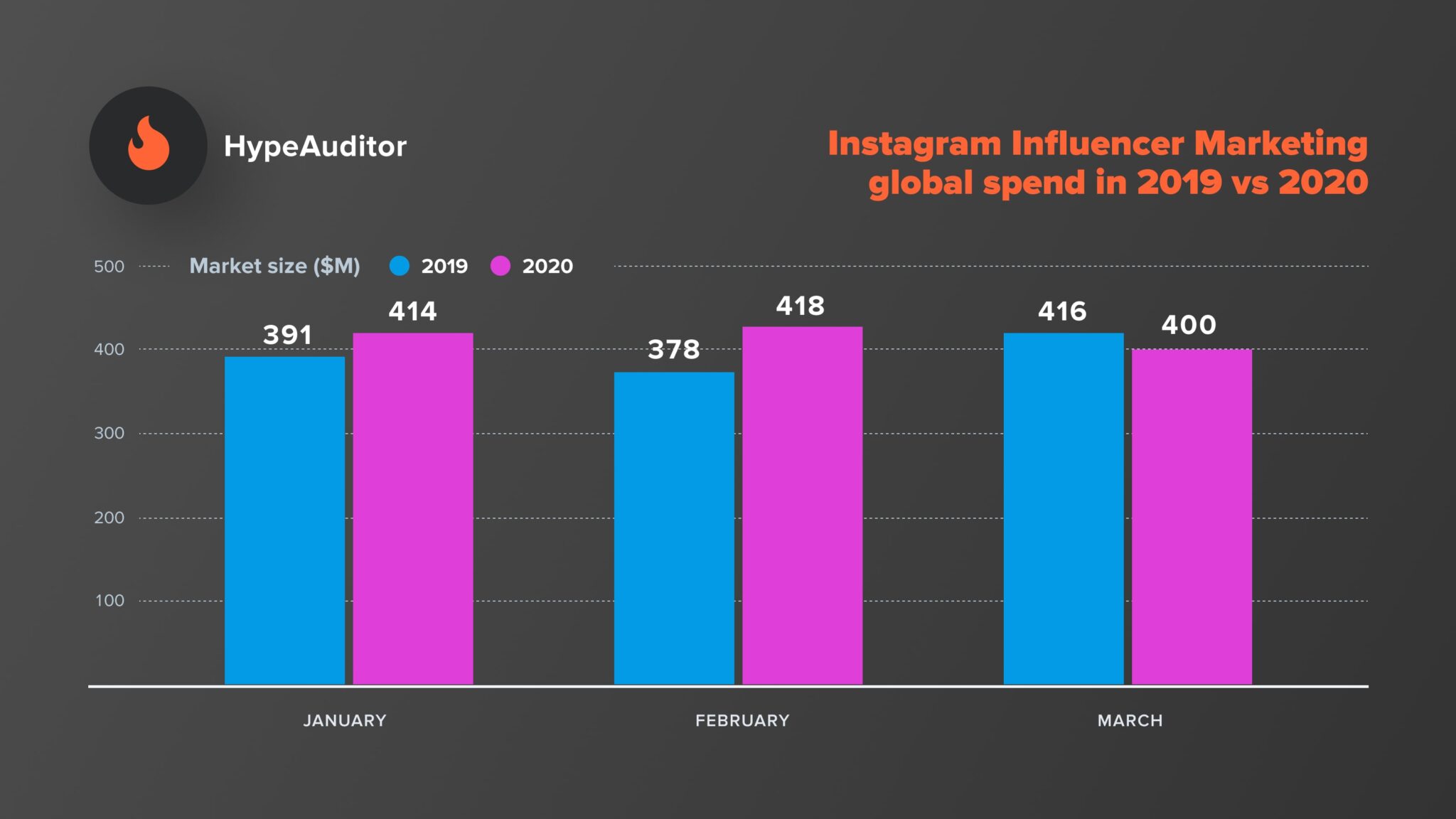Since early March there have been dozens of post claiming influencer marketing is either dead, or about to run into its first depression or some other declaration of how COVID-19 is going to spell doom for those who make their money being fabulous online. While the economic schism that the corona virus has been will certainly have an impact, new research on influencer spend from Hype Auditor shows the “big” drop wasn’t so big after all.
Focusing exclusively on Instagram, which in and of itself is suspect, Hype Auditor’s data suggests that the influencer market there will not dip below $5 billion in 2020, though it will likely shrink below its $5.24 billion level in 2019. The March 2020 estimate for influencer spend on Instagram reached $400 million, just a 4 percent drop from March of 2019, though down $18 million from February.

If you had told me a week ago that influencer spend on any platform would only drop four percent from February to March, I might have suggested throwing a party. But, you know, social distancing and stuff.
The Legitimacy of the Influencer Marketing Market
Hype Auditor certainly has a stake in the game and benefits from projecting good things for influencer marketing spend. It is a software company that offers influencer discovery and analytics software. When things are good for influencers, things are good for them.
Focusing just on Instagram is probably a limitation of post discovery, more than anything else, but also doesn’t give me a great deal of confidence that the numbers are the same across platforms. Twitter, Facebook and even LinkedIn are less hyped influencer platforms and will thus likely see greater drops in brand investment. TikTok and other emerging platforms might be too emerging to warrant big brand spends, so I anticipate those influencer market places might also see larger drop off.
But its data suggests there is substance to the claims. It analyzed Instagram posts and stories marked as “sponsored” to get a sense for how big the spend on the platform was. Even if it sampled a small number (it analyzed over 3 million posts, according to its article revealing the data, and it projected the real number, it’s hard to argue with the reality.
We should, however, keep in mind they looked at March, not April (yet). The real impact of budgets after quarantines began and travel, food and event type brands shut down influencer spend all together, wouldn’t have taken hold until late March at the earliest. As awesome as the data is, budget impacts don’t move at the speed of the Internet. April will be more revealing.
There is Still Power in Influencer Marketing
Still, there are incredible reasons to and opportunities in using influencers, even in a COVID-19 world. Some data I’ve seen suggests that brands are pulling money not from influencer marketing but more traditional paid channels to spend conservatively in our “uncertain times.” Some are even pouring more money into influencers right now because consumers are stuck at home more, looking for engaging content.
And influencers are best at creating engaging content. Even better than most brands, which is why we use them in the first place.
Yes, some verticals are more challenging to justify influencer spend right now. Travel and tourism is kind of bleak. Restaurants, sports, concerts and events are also a big question mark. But companies that sell home and office products, toys and games, technology, spirits, or gardening and landscaping items have the opportunity to thrive.
Influencer Marketing is Not Dead
Don’t think that COVID is an influencer killer. If anything, this situation is making influencer marketing better and a more viable opportunity for brands. We have this preconceived notion. in our minds that influencers are peace-sign, duck-face, selfie addicts, and some are. But those that are superficial or only post about how perfect their world is are falling by the wayside now. Their audiences see the world as it is. And it ain’t perfect.
I see COVID as almost a natural cleansing of the influencer market. Tough times call for tough people. And the influencers who bring substance and value to their audiences, especially in a time of need or crisis, are going to stand out and build even stronger relationships with their audiences.
If you don’t think brands are watching and waiting for the right time to engage those influencers, you’re about to watch your competition pass you by.
See more of the Hype Auditor report on its quite useful blog at Hype+Journal.

